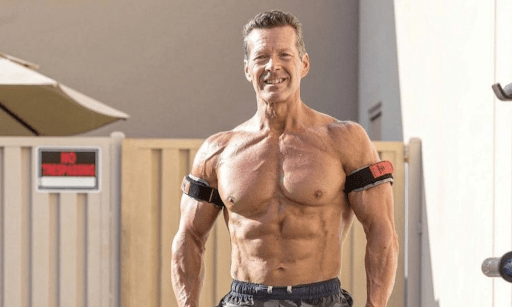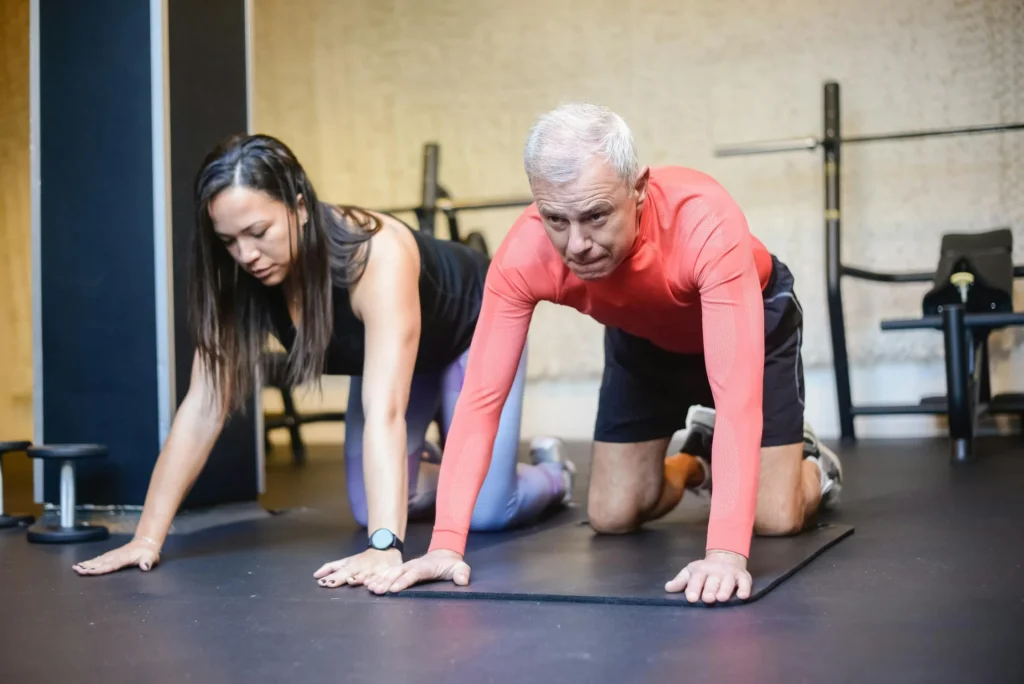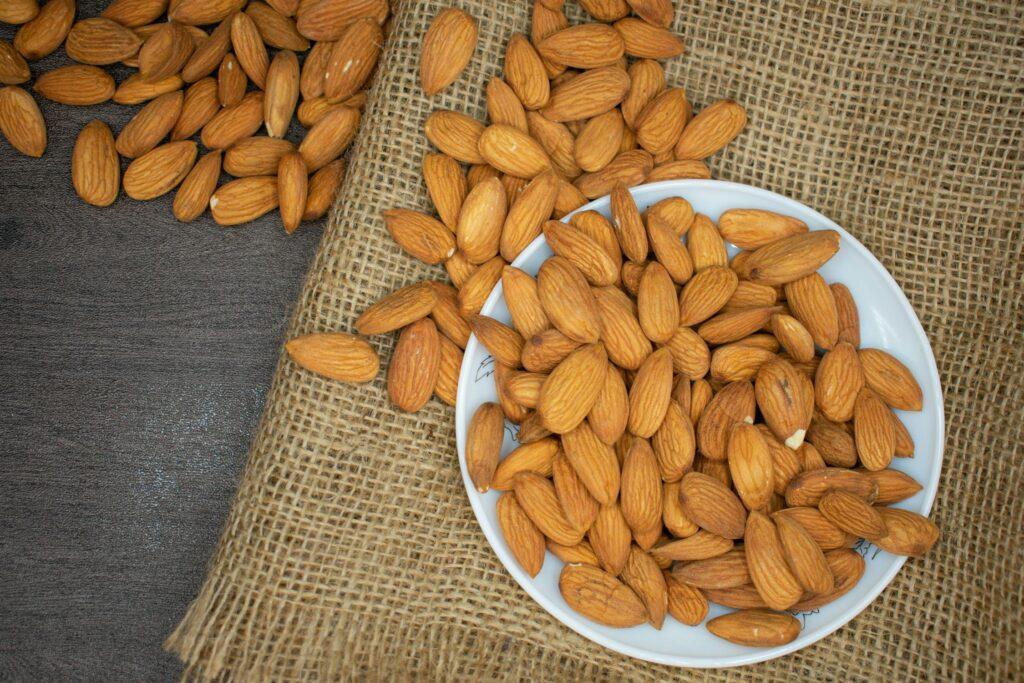How To Build Muscles for Over 50 and Above

As we age, we face unique challenges that can make building muscle more difficult. These challenges include a natural decline in muscle mass and strength, reduced metabolic rate, slower recovery times, and increased risk of injuries. Additionally, hormonal changes, such as decreased testosterone levels in men and reduced estrogen levels in women, can further complicate muscle maintenance and growth.
Despite these challenges, building muscle over 50 is possible. Building muscle helps counteract aging effects, such as loss of muscle mass and bone density.
Enhanced muscle strength also improves functional abilities, making exercise easier and contributing to a better quality of life.
To effectively build muscle over 50, you need to adopt a comprehensive approach. This article explains effective strategies for building muscle over 50, including recommended training workouts, proper nutrition, and supplements.

WHAT HAPPENS TO MUSCLES OVER AGE 50
Most individuals start losing muscle mass and strength at 5% to 30 % per decade as they turn 30. This condition is called sarcopenia and is influenced by several factors, including reduced anabolic hormones, changes in the nervous system, and reduced fiber muscles.
When you are young, your body powerfully stimulates muscle protein synthesis whenever you work out or eat a protein. But as you age, you experience anabolic resistance, where your body’s ability to synthesize muscle proteins diminishes. This situation occurs because your muscles have started to respond slowly to eating and training, gradually losing muscle mass.
When you’re over 50, you will likely experience a decline in anabolic hormones such as testosterone, growth hormone, and insulin-like growth factor-1 (IGF-1), which are crucial in muscle maintenance and growth. A decrease in these hormones automatically leads to a decline in muscle mass and strength.
Muscle and strength loss can profoundly affect your performance, physique, and overall health. As muscle mass declines, you may experience reduced strength and endurance, impairing your ability to lift heavy weights and sustain intense workouts. This can decrease muscle definition and size, adversely affecting your competitive edge and aesthetic goals.
Although muscle mass and strength decrease with age, it is possible to keep building muscle and strength when you are over 50. You can build or maintain muscle mass and strength through targeted nutrition, consistent strength training, and adequate recovery methods.
WORKOUTS TO BUILD MUSCLE FOR OVER 50
To build muscle and strength or reverse muscle mass loss, you need to challenge your muscles by doing workouts they are not used to. The muscles need to work harder than before.
Strength training is one of the best ways to build your muscles and strength continually as you age.
Incorporate compound exercises that target multiple muscle groups into your workout routine at least two to three times a week, with an appropriate rest of 48 hours. These exercises are more effective for building overall strength and muscle mass as they work multiple muscle groups simultaneously.
Compound movements also improve flexibility, reduce the risk of cardiovascular disease, and improve functional strength. This makes working out easier and reduces the risk of injuries.
When starting strength training, apply the progressive overload technique. Progressive overload involves continually increasing the demands placed on the body during exercise to stimulate muscle growth and adaptation.
Start with a challenging but manageable weight for your current fitness level. As your strength increases, progressively add more weight, increase the number of repetitions, or decrease rest intervals between sets.
Progressive overload not only stimulates muscle hypertrophy but also strengthens tendons, ligaments, and bones, which is beneficial for older adults. Below are the most effective strength training exercises for building muscle and strength for bodybuilders over 50.
SQUAT
The squat is the best lower-body exercise for building and strengthening muscles. It primarily targets the quadriceps, hamstrings, glutes, and core.
Like any other exercise, start with bodyweight squats or use a lighter weight to perfect form and avoid knee or back injuries.
DEADLIFTS
Deadlifts are full-body exercises that increase muscle mass and enhance overall body strength and functional movements, such as lifting weights off the ground. They engage the hamstrings, glutes, lower back, core, upper back, and grip strength. When doing them, maintain proper form, particularly a neutral spine, to prevent back pain and injuries.
DUMBBELL BENCH PRESS
Dumbbell bench press exercise targets the pectoral muscles, triceps, and shoulders. Using dumbbells instead of barbells provides a greater range of motion and helps address muscle imbalances, benefiting those over 50.
Start with lighter dumbbells and focus on controlled, steady movements to build muscle strength and improve upper body function.
OVERHEAD PRESS
The overhead press primarily works the shoulders, triceps, and upper back. This exercise enhances upper body muscles, strength, and stability. Proper technique is essential to avoid shoulder injuries.
BARBELL ROW
Barbell rows target the upper back, lats, traps, and biceps, promoting a strong back and improved posture. For older adults, this exercise helps counteract the common issues of poor posture and back pain.
To stay safe, maintain a slight knee bend and keep the back straight throughout the movement.
Once you’ve mastered compound exercise, incorporate isolation exercises, though compound exercises should remain a significant part of your workout routine. Isolation exercises, such as bicep curls, tricep extensions, and leg extensions, strengthen muscles, which is advantageous for addressing muscle imbalances and weaknesses.
HOW TO EAT TO BUILD MUSCLE WHEN YOU’RE OVER 50?
Proper nutrition is paramount for a bodybuilder over 50 looking to build muscle. As the body ages, it undergoes various physiological changes, including a slower metabolism and decreased muscle protein synthesis. A strategic diet approach can help you counter these effects and build muscle.
These strategies include considering the following:
CALORIC INTAKE
A high amount of quality calories is the foundation for adequate nutrition for building muscle mass and strength for bodybuilders over 50.
While the exact caloric needs vary based on activity level, metabolism, and body composition, a general guideline is to consume slightly more calories than the maintenance level to support muscle growth.
Calculating your caloric intake using an online calorie calculator provides a quick and personalized estimate of your daily caloric needs for muscle-building. First, you calculate the basal metabolic rate (BMR) and then adjust for activity level to find the Total Daily Energy Expenditure (TDEE).
BMR is the number of calories your body needs at rest to maintain essential physiological functions, while (TDEE) is the total number of calories you need to consume daily to maintain your current weight.
Most calculators automatically add the caloric surplus needed for muscle building. However, suppose the calculator does not have an opinion. In that case, it is recommended that you add approximately 5% to 10% of your current calories or 350-500 calories daily to the TDEE to create a caloric surplus that supports muscle gain without excessive fat accumulation.
CALCULATION EXAMPLE
- Find a reliable calorie calculator such as MyFitnessPal TDEE Calculator or the Harris-Benedict equation calculator and input your details. Let’s use a commonly available calculator and the following information:
- Age: 50
- Sex: Male
- Weight: 154 lbs
- Height: 5′ 9″
- Activity Level: Moderately active (exercise 3-5 days per week)
- Calculate baseline caloric needs: The calculator will provide your Basal Metabolic Rate (BMR) and Total Daily Energy Expenditure (TDEE). The calculator provides the following:
- BMR: 1560 calories/day.
- TDEE: 2400 calories/day for moderately active
- Add Calories for muscle building: Most calculators will have an option to adjust for muscle gain. If not, manually add a caloric surplus of 250-500 calories/day.
After calculating caloric intake, you should also consider the macronutrient consumption amount. According to research, the calorie intake of over 50 years bodybuilder should contain:
- 25%-30% of total calories from protein
- 55%-60% of total calories from carbs
- 15%-20% of total calories from fats
PROTEIN INTAKE
Protein is the building block for muscle growth and repair; if you don’t have enough, it will be difficult to build muscles when you’re over 50.
Bodybuilders over 50 should aim for a slightly higher protein intake than younger people. A standard recommendation is to consume around 1.3 grams of protein per kilogram of body weight daily to prevent age-related muscle loss and 1.6 grams of protein per kilogram of body weight daily for muscle gain.
You cannot consume all the protein in a single sitting. Distribute your protein intake evenly across meals, aiming for 20-30 grams per meal. Every meal should include high-quality protein sources such as lean meats, poultry, fish, eggs, dairy products, legumes, and plant-based proteins like tofu and tempeh.
CARBOHYDRATES
Carbohydrates provide the energy needed for intense workouts.
Complex carbohydrates such as whole grains, fruits, vegetables, and legumes are ideal as they offer sustained energy and essential nutrients. The carbohydrate intake should be adjusted based on activity levels, generally ranging from 3 to 5 grams per kilogram of body weight per day.
FAT INTAKE
Fats are essential for hormone production, including testosterone, which plays a role in muscle growth. Healthy fats from sources like avocados, nuts, seeds, and olive oil should be part of the diet. About 20-35% of daily caloric intake should come from fats, focusing on quality sources.

VITAMINS AND SUPPLEMENTS
While whole foods should be the primary source of nutrition, supplements can help you acquire all the nutrients you cannot get from food. Here are some essential supplements and vitamins to consider:
PROTEIN SUPPLEMENTS
Protein supplements are effective for people looking to build muscle, recover from workouts, and meet their daily protein needs, especially for those over 50. The most common protein powders are whey protein, casein protein, or plant-based protein powders
Whey protein is a complete protein containing all nine essential amino acids. It is quickly digested and absorbed, making it ideal for post-workout recovery. Whey protein is also rich in leucine, an amino acid critical for muscle protein synthesis.
Casein is also a complete protein supplement but is digested and absorbed more slowly than whey. This makes it a good option for sustained amino acid release, such as before bed, to support muscle repair and growth during sleep.
Plant-based proteins include pea, rice, hemp, soy, and mixed plant protein blends. They are suitable for bodybuilders over 50 with dairy allergies, lactose intolerance, or following a vegetarian or vegan diet.
CREATINE
Creatine monohydrate is one of the most well-researched supplements for muscle building. It helps increase strength, power, and muscle mass by improving the ability to perform high-intensity exercises. A typical dosage is 3-5 grams per day.
BRANCHED-CHAIN AMINO ACIDS (BCAAS)
Branched-chain amino Acids (BCAAs), particularly leucine, play a crucial role in muscle protein synthesis. Supplementing with BCAAs can help reduce muscle soreness and support recovery, especially when consumed before or after workouts.
OMEGA-3 FATTY ACIDS
Research indicates that omega-3s can enhance muscle protein synthesis, the process by which the body repairs and builds new muscle tissue. This is particularly important for older adults, as the efficiency of muscle protein synthesis tends to decline with age, a condition known as anabolic resistance.
Omega-3s are well-known for their cardiovascular benefits. They help reduce triglycerides, lower blood pressure, decrease the risk of arrhythmias, and slow plaque development in arteries. Therefore, reducing the risk of heart disease is particularly important as the risk increases with age.
VITAMIN D
Vitamin D is essential for bone health and muscle function. Many older adults are deficient in vitamin D, which can impair muscle strength and recovery. Supplementing with 1,000-2,000 IU of vitamin D3 daily, or as a healthcare provider recommends, can help maintain adequate levels.
MULTIVITAMIN SUPLEMENT
A high-quality multivitamin can help fill nutritional gaps and ensure adequate intake of essential vitamins and minerals for overall health and muscle function.
If you are over 50, it’s advisable to consult with a healthcare provider before starting any supplement regimen to ensure the supplements are appropriate for your specific health needs and conditions.
CONCLUSION
Building muscle after 50 is possible and incredibly beneficial for maintaining strength, vitality, and overall health. By incorporating strength training exercises, such as squats, deadlifts, dumbbell bench presses, overhead presses, and barbell rows, along with progressive overload, you can effectively stimulate muscle growth.
Pair your workouts with a balanced diet rich in protein, healthy fats, and complex carbohydrates, and consider supplements like creatine and omega-3 fatty acids to enhance your efforts.
Take action today and witness the transformative power of strength training and proper nutrition in building muscle and enhancing your well-being after 50.
Steroids4U.eu – Steroids4U.net – Steroids4U.to | Best EU Online Steroid Shop – Buy Steroids



